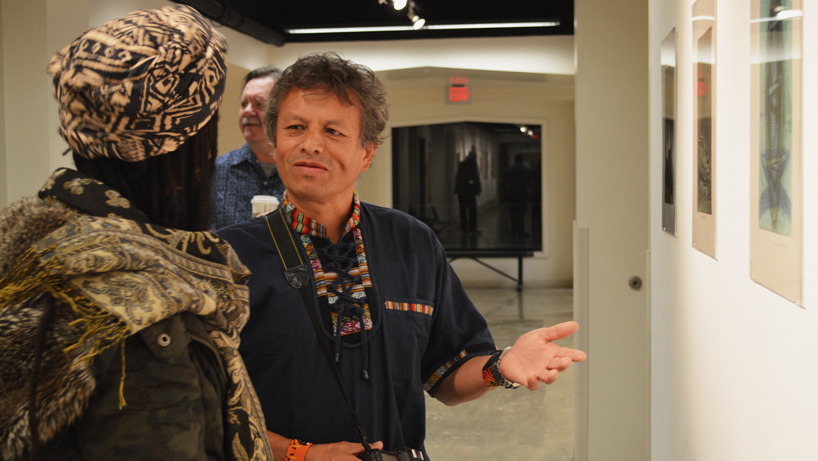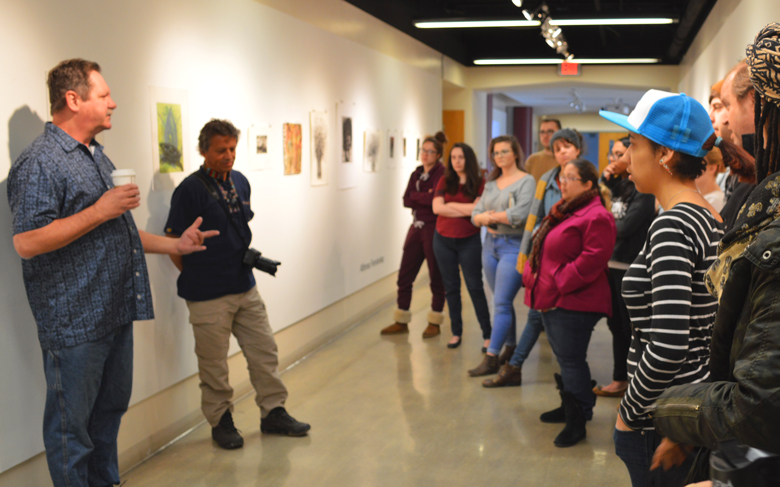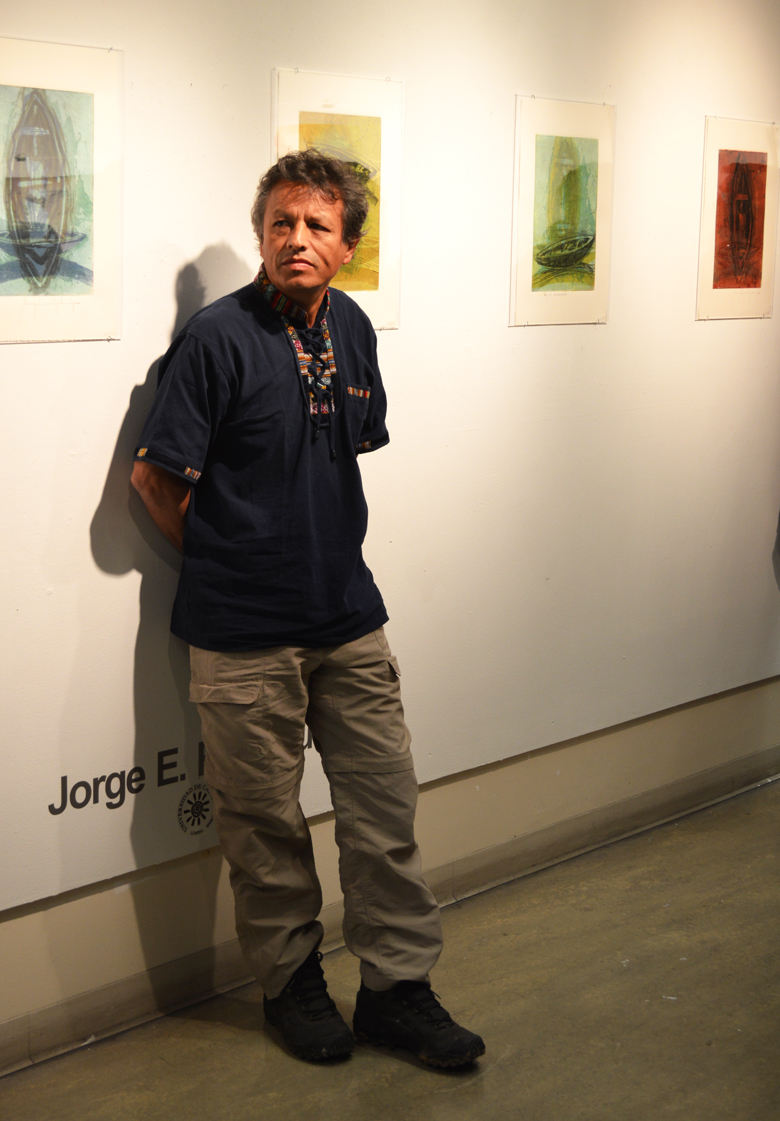
Following a March 16 gallery talk in UMSL’s Fine Arts Building, Jorge E. Rodríguez discusses the inspiration behind several of his prints with art education major Da’Vyne Moncure (at left). (Photos by Evie Hemphill)
When Jeff Sippel and Jorge E. Rodríguez first met at a symposium in Argentina, neither artist could have foreseen the conversation they’d be having with students at the University of Missouri–St. Louis this month.
During that short stay in Buenos Aires nine years ago, Sippel introduced Rodríguez to mokulito, a Japanese printmaking process that was relatively new to Sippel himself at the time. Since then Rodríguez has made the most of the wood-based technique, using it to create many prints of his own and sharing it with his students at the University of Caldas in Colombia.
“I’m so impressed with what he’s done with this process and with his students since then,” said Sippel, a longtime professor of art and art history at UMSL.
Last week it was Sippel’s students who were learning from Rodríguez. With Rodríguez in St. Louis for a brief residency at Paul Artspace, his work filled the central corridor of UMSL’s Fine Arts Building as part of “Delirium,” an international exhibition that also included works by Sippel and by Alfonso Fernández, a Chilean artist.
Students and faculty crowded together in Gallery FAB last Thursday morning, eager to hear more about Rodríguez’s approach to the prints on display.
“What struck me the most was the intersection of spirituality and nature,” said UMSL art education major Da’Vyne Moncure. “This is his experience, and it’s hard to translate without having that experience. But it comes across as a beautiful picture.”
Several of Rodríguez’s prints comprise a series titled “viaje al descubrimiento,” a voyage of discovery. While his work tends to be more abstract, Rodríguez noted, a recurring image of a canoe is central to this particular series, communicating a sense of human origins and connection to the natural world.
“He sees the canoe as a symbol of that, and it’s almost primal,” Sippel said, chiming in throughout Rodríguez’s talk to help describe some of what Rodríguez is after as an artist.
At one point, Rodríguez used the popular term “24/7” to describe what art means to him, eliciting knowing grins from those gathered. And more than once Sippel used the word “driven” to describe Rodríguez, emphasizing his friend’s determination and productivity as an artist both in Colombia and in contexts far from home.

UMSL Department of Art and Art History faculty member Jeff Sippel (at left) discusses some of his own takeaways from the work on display last week in Gallery FAB.
But “love” was perhaps the most frequent word to come up during the discussion. Rodríguez is passionate about his work as a teacher and artist, he said, and that’s what drives him more than anything.
Recalling the moment one of his sons told him he wanted to pursue work as a tattoo artist despite having already invested in several years of education toward an expected career in engineering, Rodríguez smiled.
“Are you happy?” he remembered asking. When his son said yes, Rodríguez’s answer was simple: “OK.”
Sippel, who has crossed paths with Rodríguez several times in recent years including as a guest of the University of Caldas in Colombia in 2015, said that seeing some of Rodríguez’s mokulito pieces on display here in St. Louis was especially gratifying.
“This printmaking process has a lot of potential, and I’d really like to see it continue to grow,” said Sippel, who heads up UMSL’s printmaking studio, a unique space tucked away on the lower level of FAB. “It’s basically doing lithographic printing from wood. You’re using affordable, accessible materials, and it’s a more environmentally friendly process, too.”
















